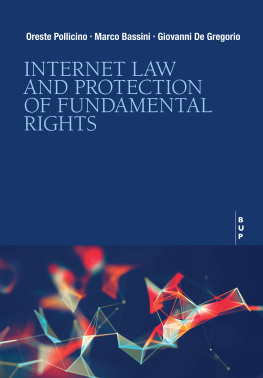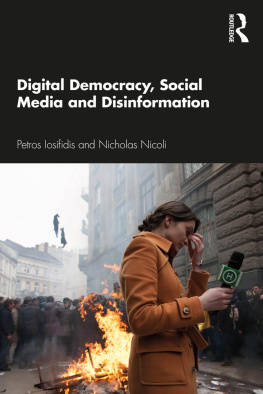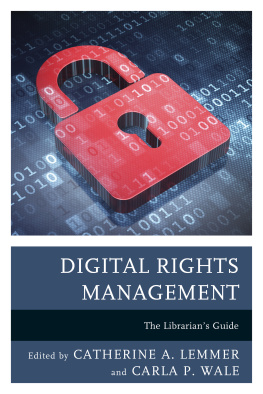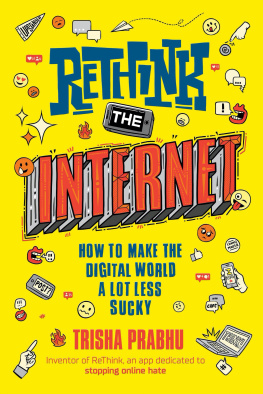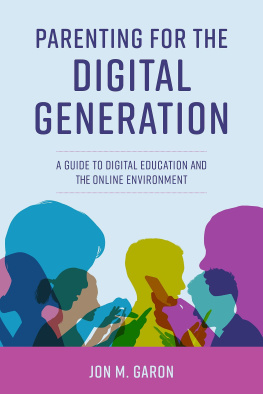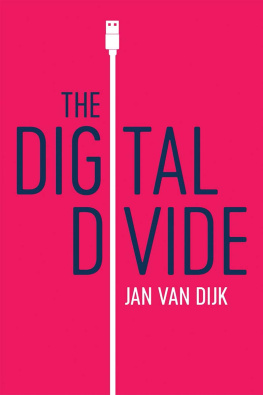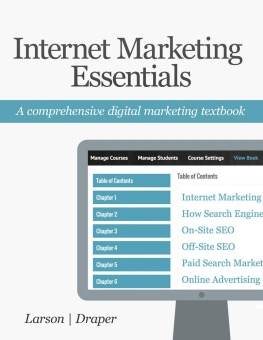The protection of fundamental rights is increasingly relevant in the digital age. The massive spread of digital and algorithmic technologies raises inherently constitutional questions. Rights and freedoms are exposed both to the opportunities and challenges of digital technologies, thus leading to different constitutional responses.
This book offers an overview of the most important challenges posed by the rise of cyberspace from a legal standpoint. After some preliminary chapters on the Internet landscape, it focuses on how the advent of digital technologies has impacted content and data, thus exploring the effects in terms of protection of freedom of expression, the right to privacy and data protection. By addressing these topics, this book aims to provide readers with a background to understand the constitutional issues raised by digital technologies.
Oreste Pollicino is Full Professor of Constitutional Law at Bocconi University, member of the executive committee of the Vienna Fundamental Rights Agency and co-founder of DigitalMediaLaws counseling.
Marco Bassini is Adjunct Professor of Constitutional Law at Bocconi University, where he also serves as programme coordinator for the LL.M. in Law of Internet Technology.
Giovanni De Gregorio is Postdoctoral Researcher at the Centre for Socio-Legal Studies at the University of Oxford, and Academic Fellow at Bocconi University.

Oreste Pollicino . Marco Bassini . Giovanni De Gregorio
INTERNET LAW AND PROTECTION OF FUNDAMENTAL RIGHTS
Typesetting: Laura Panigara, Cesano Boscone (Milan)
Cover: Cristina Bernasconi, Milan
Copyright 2022 Bocconi University Press
EGEA S.p.A.
EGEA S.p.A.
Via Salasco, 5 - 20136 Milano
Tel. 02/5836.5751 Fax 02/5836.5753
All rights reserved, including but not limited to translation, total or partial adaptation, reproduction, and communication to the public by any means on any media (including microfilms, films, photocopies, electronic or digital media), as well as electronic information storage and retrieval systems. For more information or permission to use material from this text, see the website www.egeaeditore.it
Given the characteristics of Internet, the publisher is not responsible for any changes of address and contents of the websites mentioned.
First edition: September 2022
ISBN Domestic Edition 978-88-99902-93-3
ISBN International Edition 978-88-31322-70-6
ISBN Digital International Edition 978-88-31322-72-0
ISBN Digital Domestic Edition 978-88-238-8526-4
Table of Contents
Introduction
The protection of fundamental rights in the digital age is increasingly at the core of Internet law. The massive spread of digital and algorithmic technologies is raising questions that are inherently constitutional. Rights and freedoms are exposed to the opportunities and challenges of digital technologies, thus leading to different constitutional responses.
We believe that developing skills and expertise in this area is critical for law students, and this idea has driven us to work on this book based on our experience in teaching courses on Internet law and constitutional law at Bocconi University, particularly the LL.M. in Law of Internet Technologies. This book is a collective enterprise that is in line not only with our research interest but also with our teaching focus.
The book is structured in three parts. It begins by providing a focus on the primary questions around the Internet, particularly the regulation and governance of the digital environment, the jurisdictional challenge and the access to the Internet. The second part of the book examines the law of online content, looking at the protection of freedom of expression in the real and the digital world, the law of online intermediaries, the challenges raised by disinformation and hate speech and specific sectors such as copyright and audiovisual media services. The third part analyzes the field of privacy and data protection by looking at their historical roots, the role of the General Data Protection Regulation and specific challenges, particularly the right to be forgotten, data retention and the transfer of data.
We believe that the first edition of this book can provide our students with a benchmark for understanding the constitutional challenges of the digital age. The book can be a valuable resource for undergraduate and graduate courses such as advanced constitutional law, Internet law, fundamental rights, privacy and data protection. We also believe that this book can provide a first overview for entering this area and address the constitutional questions that the development of digital technologies has raised in recent years.
This volume is also the result of the work of our research team. They have played an important role in this project, particularly at the editing stage. Therefore, we would like to express our gratitude to Flavia Bavetta, Pietro Dunn and Federica Paolucci for their support and commitment to this project.
Last but not least, we owe a world of gratitude to our students at Bocconi University who were the inspiration for this book over recent years in various undergraduate and postgraduate courses where we had the chance to teach these thrilling subjects in an intellectually vibrant and genuinely committed community.
Part I
The Internet Landscape
The Law of the Internet
1.1 Introduction
The advent of the Internet has triggered global transformations. Since the end of the 20th century, this new space has led to the consolidation of the information society, which can be considered a modern society whose progress is no longer strictly related to the production and distribution of material goods and services but is also of a digital nature. Data and information are the fuel of the economy of the new century, thus making digital services key to the development of society as a whole. Such a transformation would not have been possible without a global communication channel such as the Internet which has led to the paradigm shift from the analogue to the digital dimension or, in other words, from atoms to bits.
Developed from the military project ARPANet of the US Advanced Research Projects Agency (ARPA), the Internet spread during the 1990s thanks also to the creation of an architecture capable of simplifying the use of this means of communication: the World Wide Web. From a technical point of view, the Internet is a set of interconnected networks that form the so-called network of networks. The operation of the network is made possible thanks to the use of protocols that allow the various connected devices to be identified uniquely using an Internet Protocol number. The exchange of information takes place through data packets that constitute separate units capable of traveling independently and being exchanged conventionally through the TCP/IP protocol, while the resources found on the network are instead identified by a string of characters called the domain name.
TCP/IP stands for Transmission Control Protocol/Internet Protocol and is a suite of communication protocols used to interconnect network devices on the Internet. TCP/IP specifies how data is exchanged over the Internet by providing end-to-end communications that identify how it should be broken into packets, addressed, transmitted, routed and received at the destination. The two main protocols are the TCP, which defines how applications can create channels of communication across a network, and the IP, which defines how to address and route each packet to make sure it reaches the right destination. The IP address helps determine where to forward the message. TCP/IP thus uses a clientserver model of communication in which a user or machine (a client) is provided a service, such as sending a webpage, by another computer (a server) in the network. The TCP/IP model is structured into four layers of communication for the transmission of the data packages: the physical layer; the network layer; the transport layer; and the application layer.

